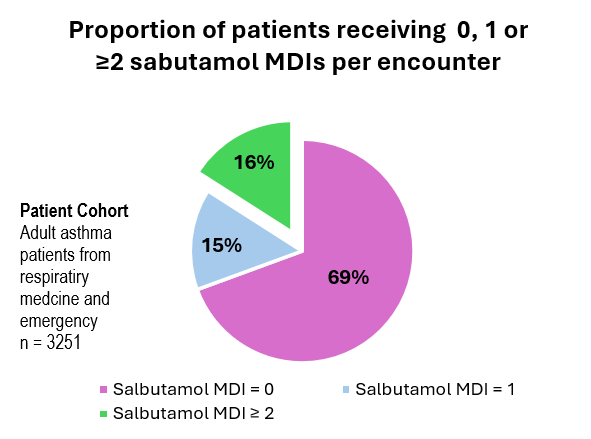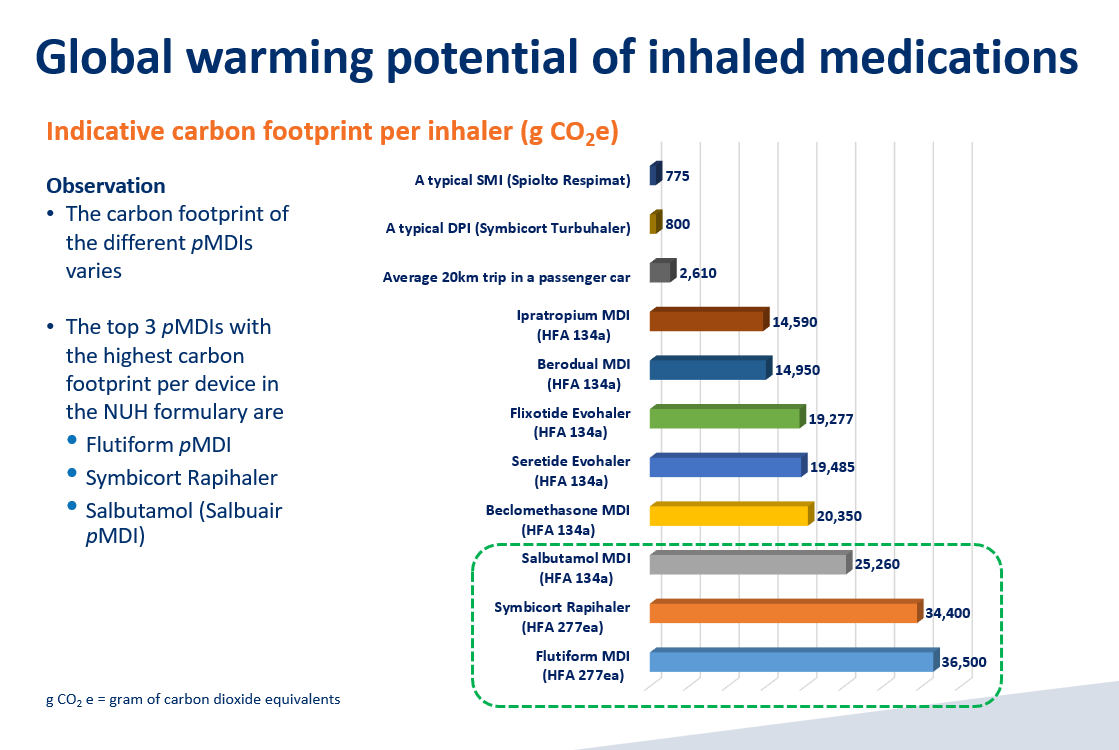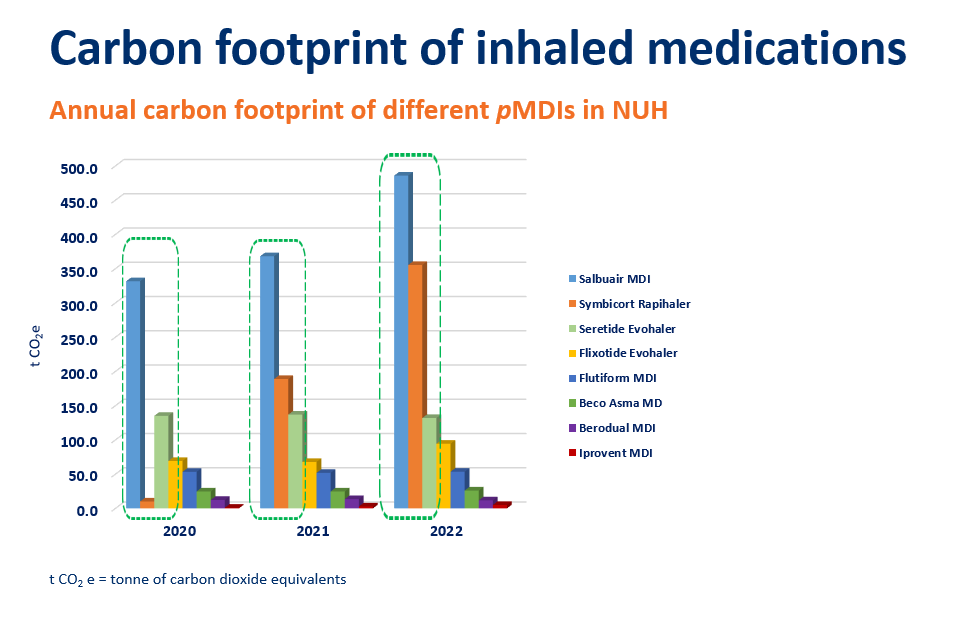Usually, when we talk about sustainability, we think of finances. This is true of Appropriate and Value-Based Healthcare (AVBC), where Value is defined as Quality of care, measured through clinical outcomes, patient-relevant outcomes, and patient experience, measured against the Cost of producing those outcomes.
Why environmental sustainability matters in healthcare
Environmental sustainability in healthcare is becoming an increasingly important issue, as the healthcare industry is one of the largest contributors to carbon emissions. Hospitals and healthcare facilities consume large amounts of energy, water, and resources, leading to significant environmental impact. By implementing sustainable practices such as energy-efficient lighting, water conservation measures, and waste reduction strategies, healthcare facilities can reduce their carbon footprint and minimise their environmental impact.
Adding carbon cost to the value equation
For a truer measure of sustainability, we introduced the concept of adding carbon cost to the value equation.
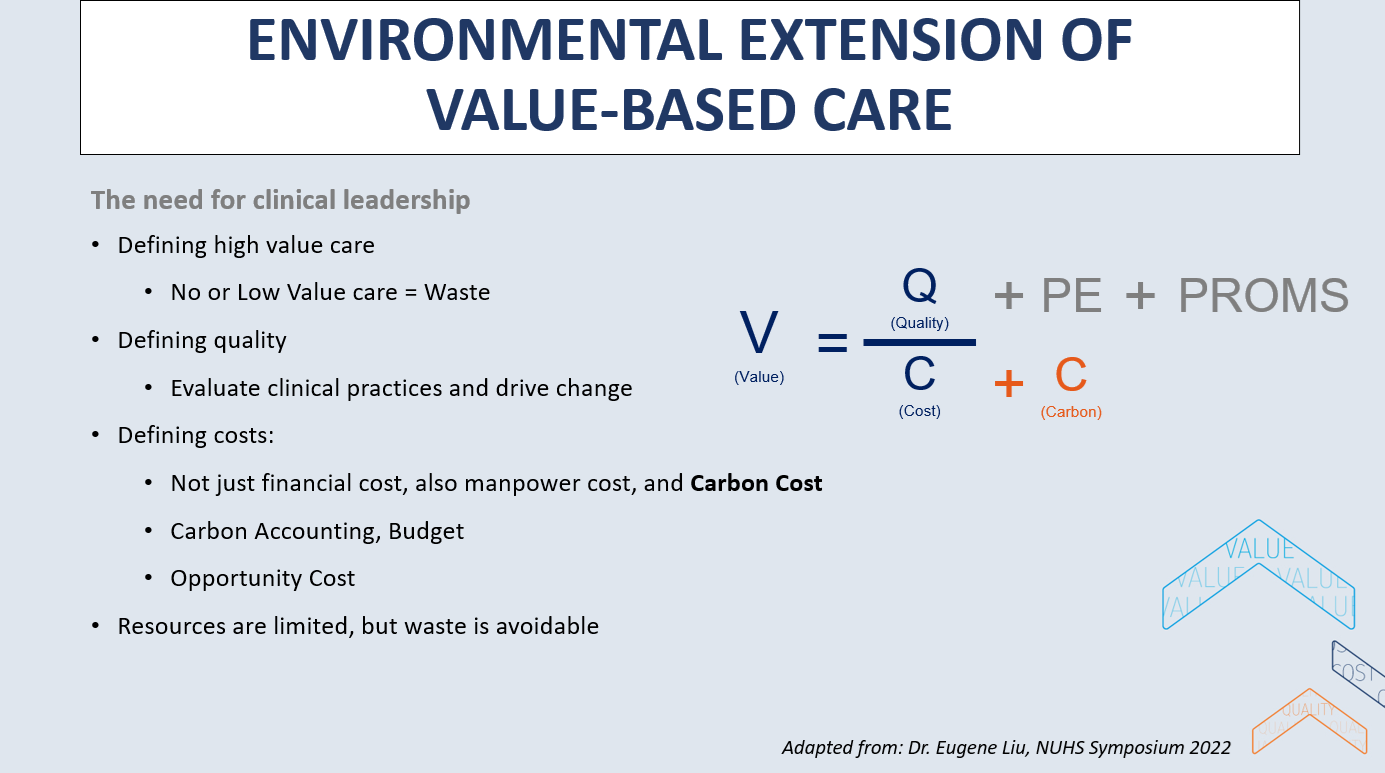
Addressing carbon emissions in healthcare is essential for promoting environmental sustainability and ensuring the health and well-being of both patients and the planet. By implementing sustainable practices and reducing carbon emissions, healthcare facilities can play a significant role in mitigating climate change and protecting the environment for future generations.
In June 2025, NUH became the first hospital in the world to receive the Healthcare Sustainability Certification, a landmark recognition awarded by the Joint Commission International (JCI) in collaboration with the International Hospital Federation’s Geneva Sustainability Centre (GSC).
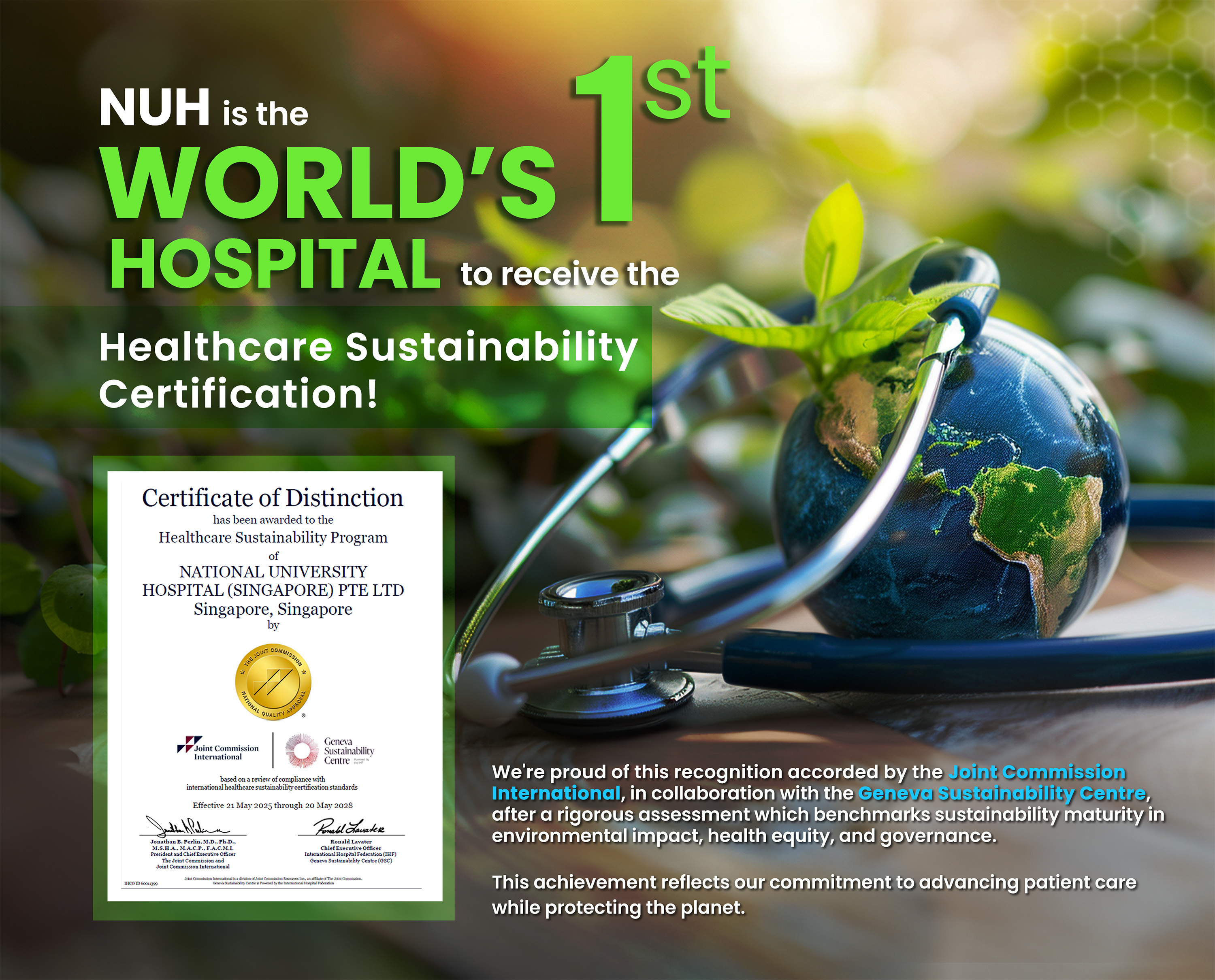
Singapore's healthcare carbon footprint
Healthcare is a leading emitter of greenhouse gases (GHG). Singapore's healthcare sector accounts for 3.4% of total GHG emissions. Our total GHG per capita is considered high compared to other countries. As such, there is a need for us to do our part in reducing GHG emissions where we can.
Taking action: Reducing metered-dose inhalers (ReMeDI)
We recognise that metered-dose inhalers (MDIs) generate significant greenhouse gases.
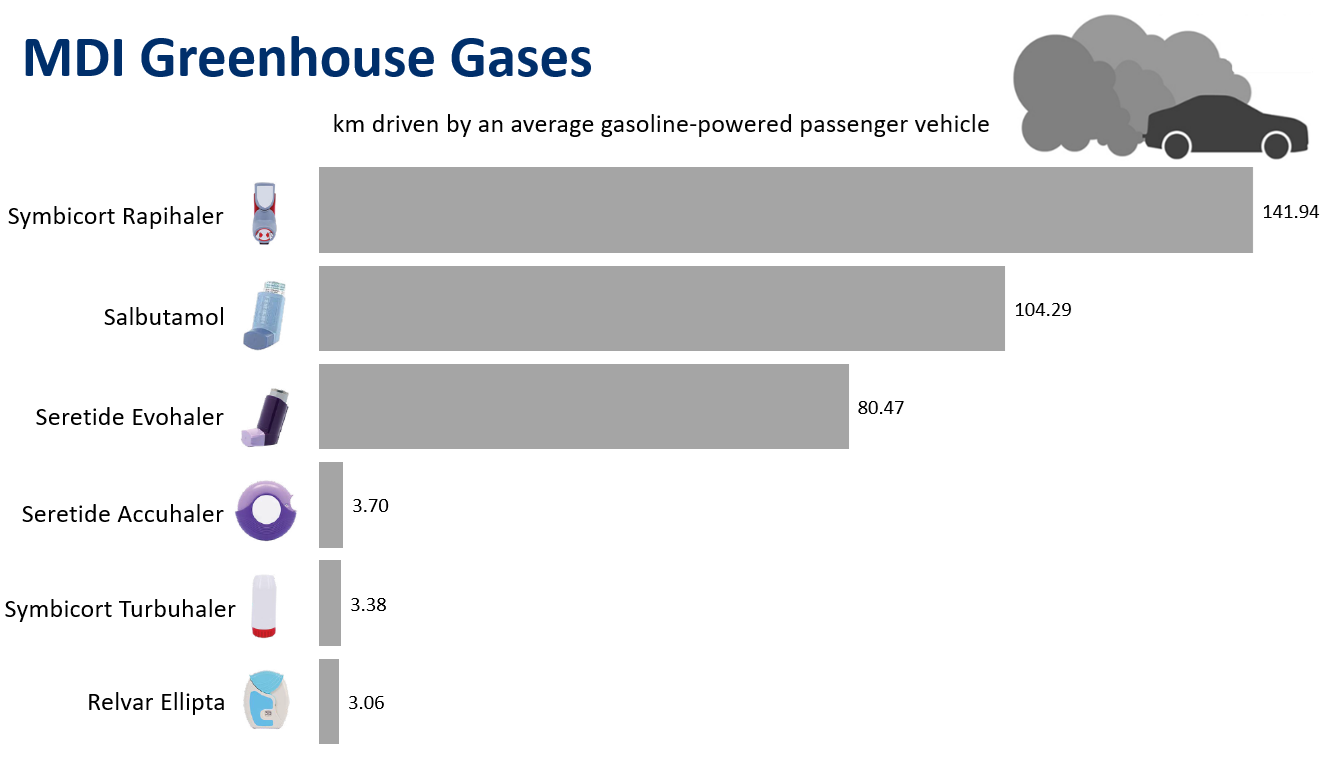
To address this, we create awareness amongst both clinicians and patients about the environmental impact of inhalers and promote sustainable alternatives.
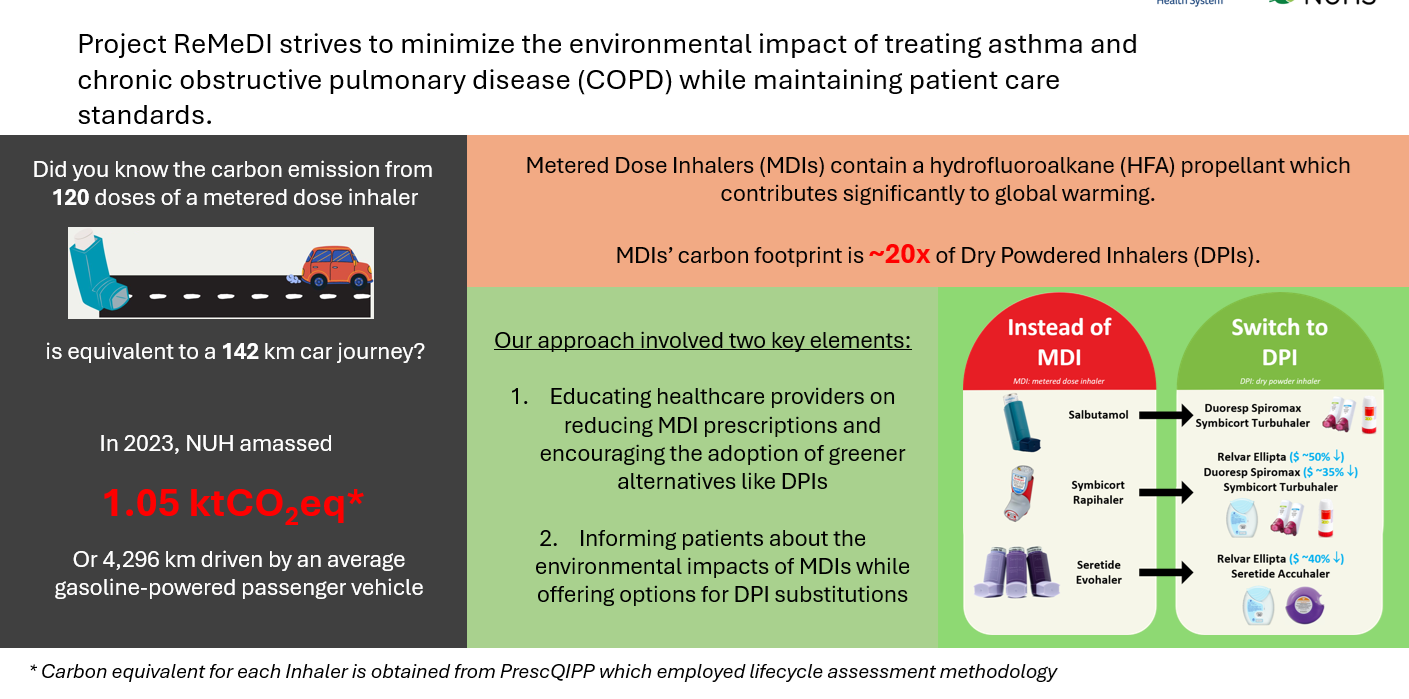
| tCO2eq = tonnes of CO2, equivalent |
Taking action: ONE and DONE for adult asthma patients
This initiative encourages appropriate prescribing and better oversight of salbutamol metered-dose inhaler (MDI) use by adult asthma patients.
It applies only to adult asthma patients, both inpatients and outpatients from all disciplines.
Proposed initiative
- Prescribing of salbutamol MDI: To limit to one per prescription
- Pharmacy dispensing of salbutamol MDI: To cap at one for each prescription
Background
Drug utilisation statistics in 2023:
Salbutamol is one of the top three pMDIs with the highest carbon footprint per device in NUH and is the top contributor to the annual inhaler carbon footprint.
This project also hopes to reduce avoidable carbon footprint from inhaled medications by:
- creating awareness among prescribers
- promoting optimisation of prescribing (considering SMART therapy and using dry powder inhalers)
Rationale for Initiative:
- Patients with well-controlled asthma should not require more than twice-weekly short-acting beta2agonist (SABA) reliever use (GINA Guidelines, 2024). This works out to no more than one salbutamol MDI (200 doses per inhaler) per year.
- Overuse of salbutamol for its short-term relief can be detrimental as it can mask the progression of the disease without treating the cause.
- Overuse of SABA (e.g. dispensing ≥ three 200-dose canisters in a year, corresponding to an average use that is more than daily) increases the risk of exacerbations. Regular SABA use also increases the risk of poor symptom control (GINA Guidelines, 2024)
- In addition, salbutamol MDI contains a hydrofluorocarbon gas (HFA-134a) as propellant, which is a powerful greenhouse gas and a significant contributor to healthcare-associated carbon footprint and thereby global warming. Reducing the use of salbutamol MDI offers an opportunity to reduce carbon footprint for the hospital.
Benefits of reducing unnecessary salbutamol MDI use:
- Minimise medication wastage and promote responsible prescribing practices.
- Reduce patients' hoarding of medications at home.
- Reduce the hospital's carbon footprint from unnecessary MDI use, as reduction of each salbutamol MDI use reduces carbon emissions equivalent to a 237km car journey.
- Aligns with the hospital's commitment to sustainable healthcare practices.





